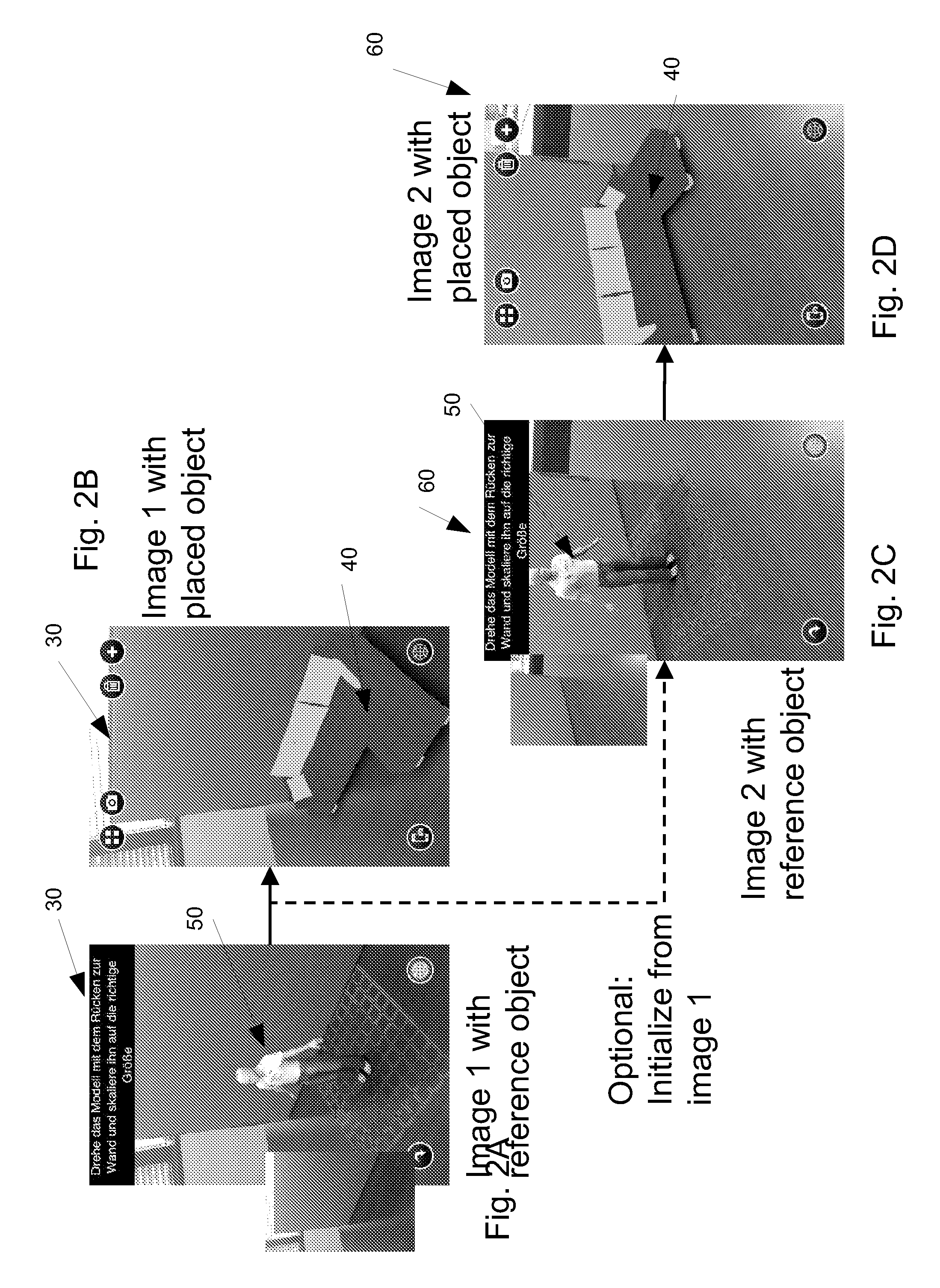Methods and systems for determining the pose of a camera with respect to at least one object of a real environment
a technology of at least one object and a camera, applied in the field of methods and systems for determining the pose of a camera with respect to at least one object of a real environment, can solve the problems of time and resource consumption and almost impossible, time and resource consumption and trouble, and methods may hardly be used in connection with any consumer products
- Summary
- Abstract
- Description
- Claims
- Application Information
AI Technical Summary
Benefits of technology
Problems solved by technology
Method used
Image
Examples
Embodiment Construction
[0033]In FIGS. 3, 4 and 5 there is shown a schematic illustration of an embodiment of a system and an exemplary scenery according to the invention. Particularly, FIG. 3 shows a system 1 in which a user (not shown) holds a mobile device 10 which incorporates or is coupled with a camera 11 for generating at least one image 30 of the real world, for example containing the real objects 31, 32 as shown. According to a particular example, the real objects 31, 32 may be a table and a cabinet which are placed in a room having a ground plane 35, and the camera 11 takes an image of the real environment to be displayed on a display screen 20. The ground plane itself could also be considered to be a real object. After determining the pose, the real environment is provided with a coordinate system 33, such as shown in FIG. 3. Further, the camera 11 is coupled with an image displaying means 20, such as a touchscreen that is incorporated in the mobile device 10. However, any other image displaying me
PUM
 Login to view more
Login to view more Abstract
Description
Claims
Application Information
 Login to view more
Login to view more - R&D Engineer
- R&D Manager
- IP Professional
- Industry Leading Data Capabilities
- Powerful AI technology
- Patent DNA Extraction
Browse by: Latest US Patents, China's latest patents, Technical Efficacy Thesaurus, Application Domain, Technology Topic.
© 2024 PatSnap. All rights reserved.Legal|Privacy policy|Modern Slavery Act Transparency Statement|Sitemap



